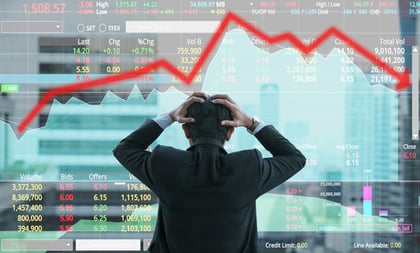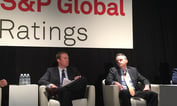Last week St. Louis Fed President James Bullard and Minneapolis Fed President Neel Kashkari warned against further rate hikes by the Federal Reserve, contending they increase the risk of an inverted yield curve, which historically has indicated an impending recession.
An inverted yield curve, which occurs when short-term rates are higher than long-term rates, is not the norm. Historically, inversions occur in the latter part of an economic growth cycle — we’re in the 10th year of one currently — when the Fed continues to raise rates to offset rising inflation and investors anticipate the hikes will slow the economy. Long rates fall or remain unchanged while short-term rates continue to rise, eventually topping long-term rates.
(Related: El-Erian: What Fed Will Signal at Meeting Next Week)
The curve hasn’t inverted yet, but it’s getting close.
The current spread between the federal funds rate and the 10-year Treasury note yield is 95 basis points, when using the upper end of the fed funds range (2%). A year ago, before three subsequent rate hikes, the spread was 101 basis points. Typically during periods of continued economic growth the spread is 250 basis points or more.
The spreads between the two-year and 10-year Treasury yields has also narrowed, to 32 basis points from 91 basis points a year ago.
Mark Zandi, chief economist of Moody’s Analytics, writes in his latest macro report that the spread between the fed funds rate and 10-year Treasury yield — what it calls the “policy yield curve” — is the “most prescient” in anticipating a recession, but the 2-year/10-year Treasury spread has also been “a foolproof leading indicator in recent business cycles.”

He says a “fully inverted curve seems plausible as soon as this time next year,” if the Fed continues “to normalizes policy more quickly in response to massive fiscal stimulus and the resulting threat of an overheating economy.” A recession typically follows one year after the curve inverts, writes Zandi.
But some economists, including former Fed Chair Ben Bernanke and current Fed Chair Jerome Powell, a former banker, aren’t convinced that an inverted yield curve in the current macro market suggests a recession is coming.









 July 24, 2018 at 04:21 PM
July 24, 2018 at 04:21 PM











